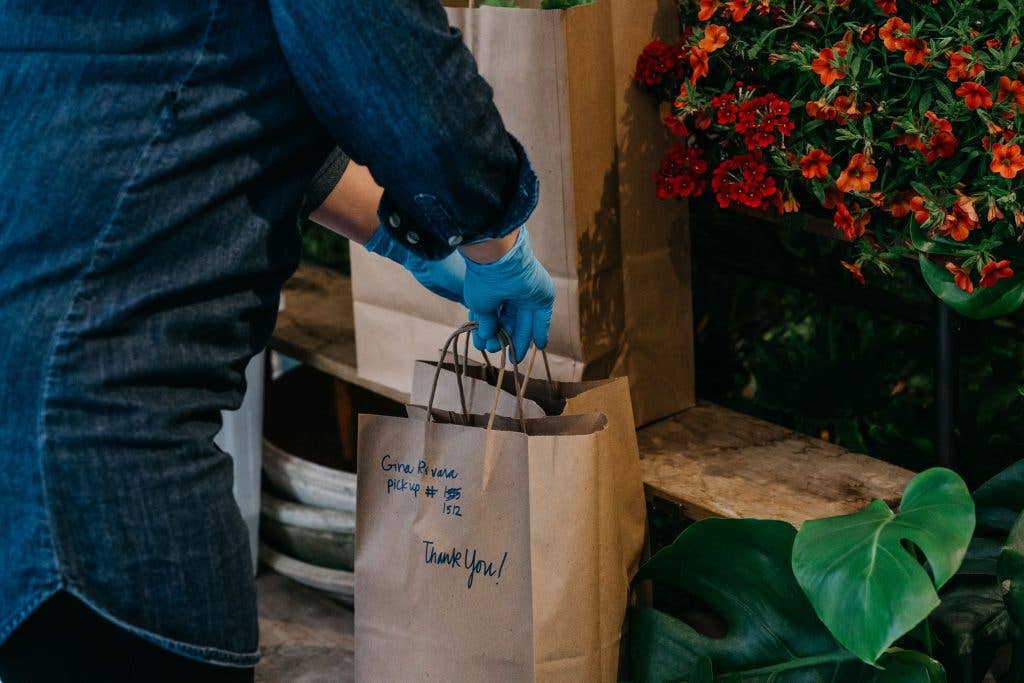
During pandemic lockdowns, curbside pickup became more common due to health and safety concerns. Today, curbside pickup is a very popular purchasing option, and more and more retailers are offering the service for their shoppers.
But what is curbside pickup? Retailers allow customers to place an order, submit payment online, and then pick up their order without leaving their car. Many customers prefer this option because it’s so convenient to just grab and go, and they can avoid lines inside stores. Unlike online shopping, customers don’t have to wait days for their items to be delivered.
The following guide explains the logistics, gives examples of curbside pickup, and highlights some of the benefits and challenges so you can incorporate this pickup option into your retail business.
How does curbside pickup work?
Retailers today have plenty of options to get their products into the hands of consumers. While in-store purchasing is still at the top of the list, retailers can also ship directly to customers’ homes, offer in-store pickup, and use the highly convenient and increasingly popular option of curbside pickup. But how does a retailer get started?
- First, if you haven’t already, implementing online shopping is an important step. You should be able to set up your e-commerce website to include the option to select “curbside pickup” during the checkout process.
- Your e-commerce website should show shoppers which items are eligible and available for curbside pickup. This is why it’s so important to have an inventory tracking system that updates online and in-store purchases in real time. Shoppers can browse products on your website and pay for their items online.
- Once you are notified that a customer has placed an order for curbside pickup, it should take precedence over any online orders or other tasks you’re working on. After you’ve found and packaged the items, you can notify the customer that their order is ready and provide instructions about what they should do when they get to your store.
- Finally, the customer arrives and calls or texts to let you know they’re outside. In many cases, retailers provide a designated pickup area for curbside pickup where customers can wait until someone brings their order directly to them, but as long as there’s ample parking near your store, you’ll be just fine. You or a salesperson simply walks to the customer’s car, confirms their order, and hands the items to them directly or puts them in the trunk.
Curbside pickup tips and best practices
While big-box stores might seem to have the upper hand when it comes to curbside and in-store pickup, there are countless examples of local and independent retailers running a seamless order-pickup service. The key is to create a smooth, easily repeatable system for accepting orders, packing purchases, and distributing goods to customers when they arrive. You’ll quickly learn what works and what doesn’t, so try to stay agile—don’t be afraid to iterate on your system.
Talk to other businesses
Learning from other businesses can provide precious insights into what works and what doesn’t when it comes to curbside pickup. Kelly Marie Thompson of Fleur Inc. in Chicago says that she visited another business in her area—a local nursery—to inform her own curbside plan that began during local restrictions related to COVID-19. “I bumped into the owner, and we had a great conversation about the structure and the systems that are being put into place,” she said. It helped her determine what she needed to do in her own shop.
Consider your online presence
If you have an e-commerce website, it should be easy to add a pickup option with instructions for curbside customers. However, you don’t necessarily need to be an e-commerce pro to take orders online.
Lori Powers of Madison & Co. in Greenville, South Carolina, didn’t have much of an online presence before pandemic restrictions required her to rethink those options. Now, Lori takes orders via Facebook Live for in-store pickup. She’s even found that 75% to 80% of the customers who come pick up their orders end up purchasing additional items in person.
Use online and physical marketing
Use your online marketing channels to let customers know that you’re accepting orders for local pickup, including details on how to order. Also, get out your markers and chalk to create some signs. Homemade signage is not only inexpensive and fun to make but also an authentic and endearing way to grab the attention of passersby who may be inspired to buy from you.
Curbside and in-store pickup customers may also be motivated to make additional purchases when they come to pick up their items, so make sure your window displays are on point and refresh the shelf space near your in-store pickup area.
Want to get your store set up for curbside or in-store pickup? Shop now on Faire to get new inventory ready for every purchasing option.

